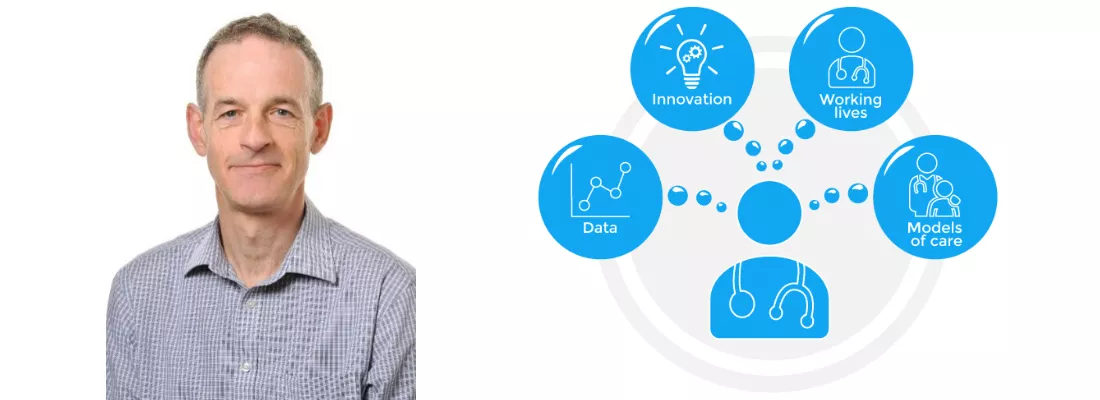
Update Paediatrics 2040 was launched in March 2021 - see our microsite
I was delighted when I was asked to collect data to contribute to the Paediatrics 2040 project. I like “big” data and I like paediatrics. There is nothing like data to build a plan around. And Paediatrics 2040 is an ambitious plan that will benefit hugely from good data.
Forecasting the future
Predicting the future is generally considered an uncertain and unrewarding business. Perhaps. But as clinicians we are constantly judging what is likely to happen. Every working day we try to anticipate what is going to happen with a patient over the next few hours, days, and weeks. Data (from tests) often form an important part of our forecasting. We are used to working in an environment where there are rarely any absolutes, and where there is always some risk things won’t go to plan. We work as a team and blend experience with evidence, and then make assessments for each individual to come up with a relative risk for what might happen. We put in safety netting and then monitor the situation and see what happens. In a way Paediatrics 2040 is a similar process.
Our data and evidence workstream
So, what have I been doing for the Paediatrics 2040 project? Well, first with a few colleagues we worked out what information we needed. Let me name my very understanding colleagues: Russell (Viner), Joe (Ward) and Dougal (Hargreaves). We came to the “Data and Evidence” part of Paediatrics 2040 with different ideas. Getting the questions ironed out at the start was very useful.
We agreed that our output would have two themes. The first theme will be a patient-centred quality of life outcome called Global Burden of Disease. This is a publicly available tool which gives the Burden of Disease for any age group pretty much anywhere in the world. If you have a few minutes, do take a look. Don’t tell Russell, but this is still a black box to me, and I have no idea how the burden is calculated. I think I have convinced him I understand his careful explanation.
The second theme will be service-centred, e.g. number of admissions, emergency department visits, GP prescriptions. The service-centred data will be stratified by deprivation status (five categories) and by age groups (<1, 1-4, 5-9, 10-14, 15-19 and 20-24). You may be surprised to read we are collecting data up to 24.9 years age, but this is to future-proof the ceiling of “paediatrics” in 2040 being up to 25 years (somewhat north of where it is in 2020!).
We have collected data from England, Scotland and Wales from 2000 to 2018. Data are all in the same format so they can be merged but also compared. We tried very hard to collect data from Northern Ireland but unfortunately this was not feasible.
What next?
With these data we can look back at trends and see where things may be heading. Clearly, the past does not necessarily predict the future. But together the past and present are a useful base on which to start predicting the future. The other Paediatrics 2040 workstreams come in here (Impact of innovation, New models of Care and Working Lives); they provide a series of lenses through which to look at the data.
The list of things that may make a substantial impact on paediatrics in 2040 is long but might include: vaccinations, gene therapy, biologics, artificial wombs, hospital closures/restructuring, increasing part-time and shift working patterns, financial crises, global warming. With an evidence base we can start to peer into the future and make some judgements. We will be proactive, play the percentage game and make a best judgement.
This is the start of a 20-year journey. Hope you can join us.
[Survey closed in March 2020]











